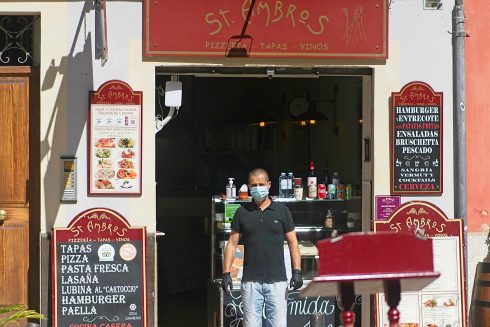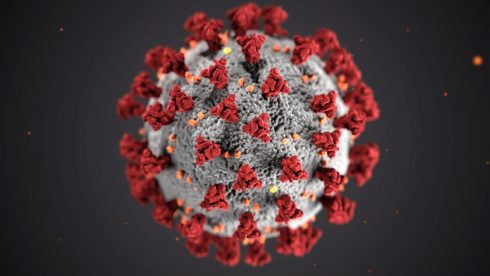THE Ministry of Health and the 17 regions have agreed on a new four-tier system to combat the coronavirus.
The document has established a set of common criteria to analyse the incidence of the virus, hoping to ensure equal restrictions across different communities.
However the power to apply restrictions will remain in the hands of the autonomous governments.
The guide uses epidemiological and healthcare data to place regions in one of four levels of risk; low, medium, high or extreme.
Data used include the cumulative incidence rate of cases per 100,000 inhabitants over the past seven and 14 days, the extent of transmission in over 65s and the number of hospital beds taken up by the virus, particularly intensive care beds.
With the data available, those in extreme risk (level 4) currently are; Aragon, Castilla y Leon, Catalunya, Madrid, Navarra, La Rioja, Ceuta and Melilla.
Those at high risk (level 3) are; Andalucia, Asturias, Castilla-La Mancha and Murcia.
In the medium risk group (level 2) are: Balearic Islands, Canary Islands, Cantabria, Valenciana and Extremedura.
At low risk (level 1) is just Galicia, due to its low hospital pressure.
However within a region, provinces may be at different risk levels. Malaga, for example, has a much lower risk currently than Sevilla or Granada.
The guide therefore allows for measures to be adopted at the provincial or even municipal level as ‘different transmission scenarios require different control measures.’
THE FOUR TIERS
Level 1: At the lowest risk level, it is advised that people remain in their social bubbles or those they live with as much as possible.
Meetings of up to 15 people are allowed but as ever the need to follow hygiene and distancing measures remains paramount.
Smoking on the street is banned when it is not possible to keep a safe distance from others and it is not permitted on terraces.
Social distancing and the use of masks are mandatory while eating and drinking in public spaces is banned if it’s not possible to maintain a safe distance.
Teleworking is recommended wherever possible and staggered shifts are advised for jobs where people have to be present.
Wakes, burials and funerals will be limited to 75% capacity in indoor spaces with a maximum of 50 people.
Clubs and nightlife venues will be closed while restaurants and bars will have an indoor capacity limit of 75%.
There will be a limit of 10 people per table or group of tables.
The distance of two metres between the chairs of different tables must be maintained and masks must be on when not eating or drinking.
In cinemas, theatres, circuses or cultural events and shows, there will be a 75% capacity limit, with seats pre-assigned.
Parks will remain open, with social distancing and hygiene measures in place.
Schools and unis will remain open and physical activity outdoors will be allowed, with social distancing and hygiene measures in place.
Level 2: The level 1 measures remain in place with some being toughened up.
Meetings will not be allowed to exceed 10, unless they are living together, and it is recommended to stay at home as much as possible.
There can be no more than two passengers per row of seats in taxis or VTCs such as Uber and Cabify.
In wakes, the capacity is limited to 50% with a maximum of 30 people indoors and without limitations outdoors as long as safety distance can be guaranteed.
Ceremonies cannot exceed 50% capacity indoors with a maximum of 30 people, with no outdoor limitations as long as safety distance met.
Places of worship cannot exceed 50% capacity.
Restaurants and bars cannot exceed 50% capacity indoors and there will be a maximum of six people per table or group of tables.
Nightclubs will be closed.
Non-professional sports are permitted as long as hygiene and distancing measures are kept to, while venues must not exceed 50% capacity.
Other cultural venues such as cinemas will have a 75% capacity limit with numbered tickets and assigned seating.
Parks will remain open with the usual measures in place, but alcohol consumption is forbidden and their closure at night is recommended.
Schools will remain open.
Level 3: The restrictions in levels 1 and 2 are maintained while some are made stricter.
Meet-ups cannot exceed six people, except those who live together, but it is recommended to stay at home.
There is a possibility of applying a mandatory closing time of 11pm on bars and restaurants or any non-essential businesses.
People are advised to leave home only when necessary and to avoid closed spaces.
Regional governments can assess whether or not to close the borders of municipalities or provinces to keep people confined (with exceptions).
The capacity at wakes reduces to a third in indoor spaces, with a maximum of 10 people.
It is recommended to postpone communions until the situation improves, but capacity is again limited to a third, as it is in places of worship.
In bars and restaurants, health chiefs must assess the closure of indoor areas or at least reduce the indoor capacity to a minimum.
Non-professional group sports can hold events if capacity is kept to one third and it is outdoors and social distancing can be maintained (indoor events will be prohibited).
Cinemas and other activities will have capacity limits of 50%.
Parks and schools will remain open under the same measures as level 2.
Level 4: Level 4 will see the same restrictions as level 3 but there may be stronger additional restrictions.
If necessary, the region can impose a state of alarm, which can see curfews and the confinement of people.
Click here to read more News from The Olive Press.








